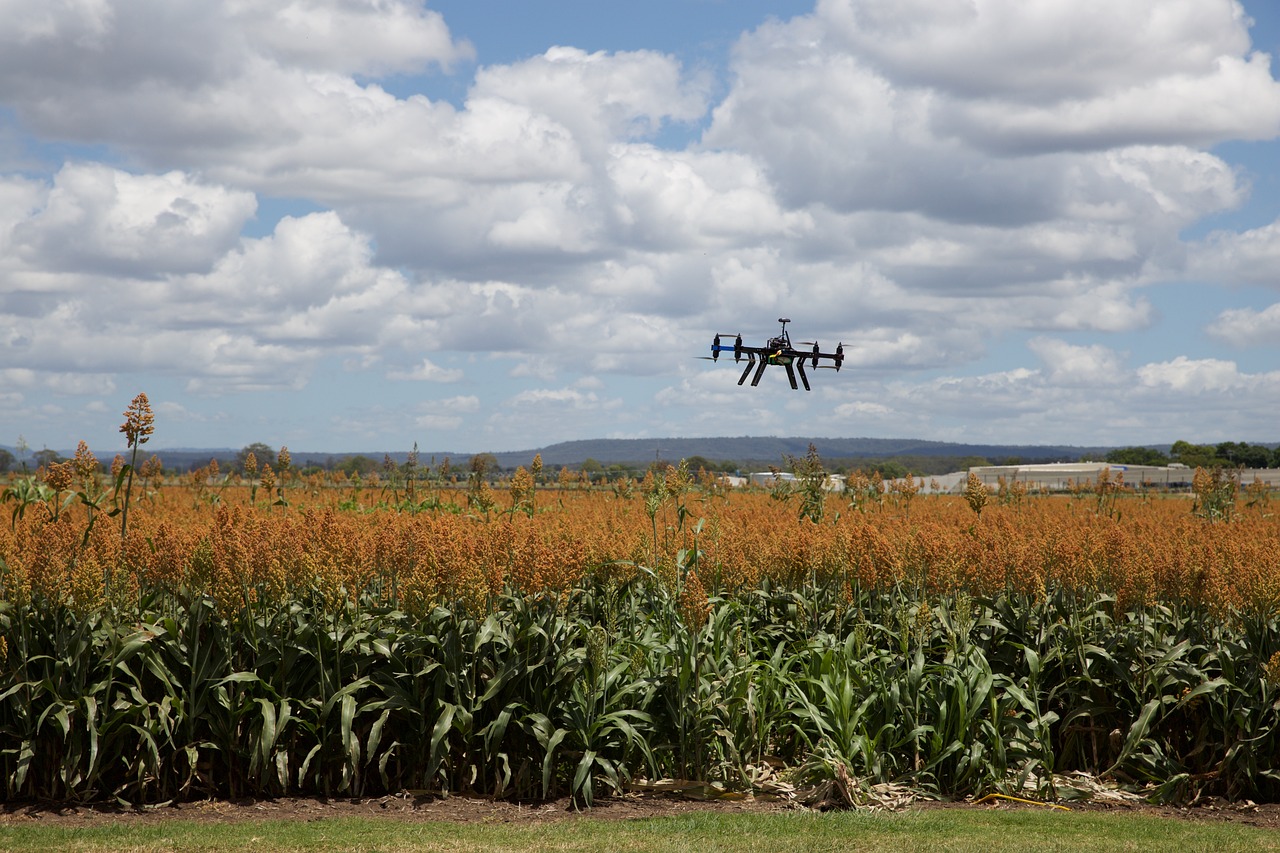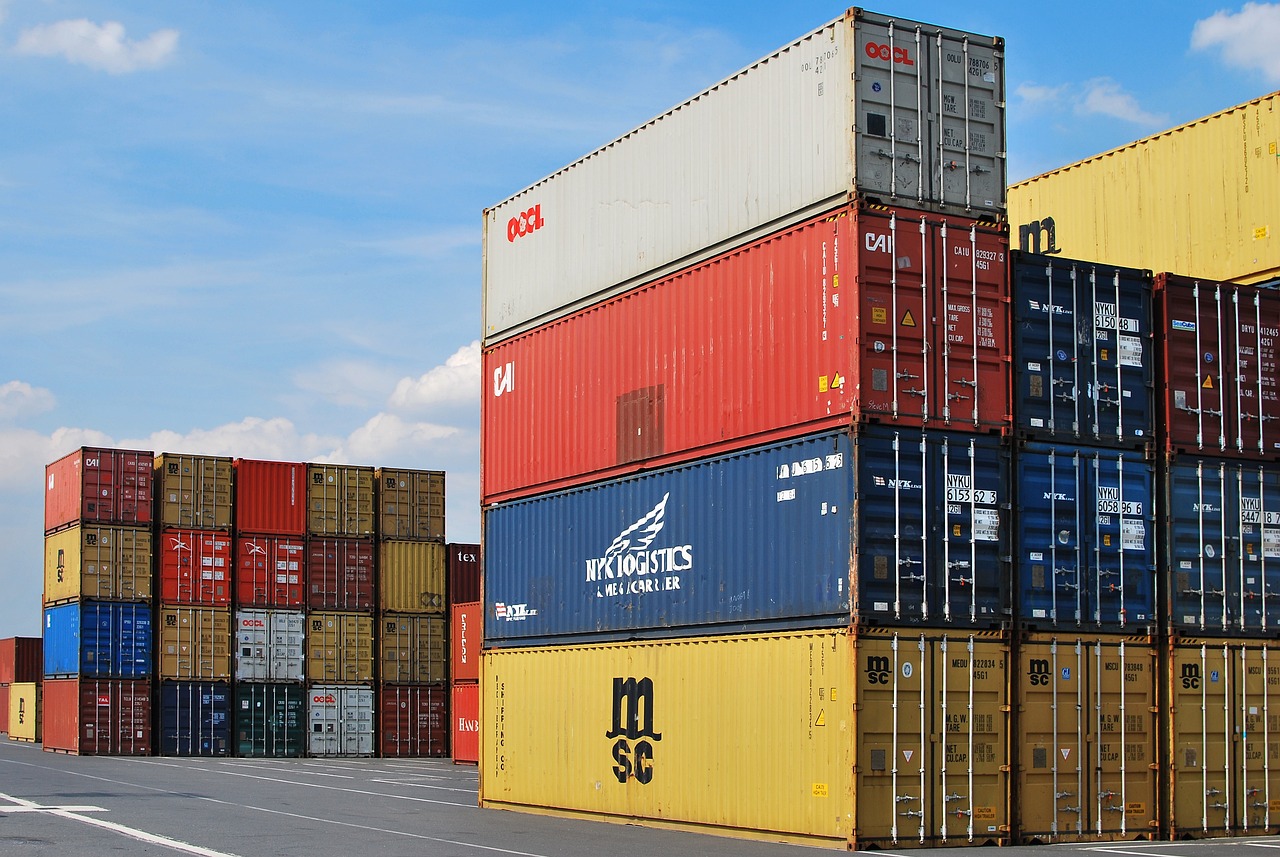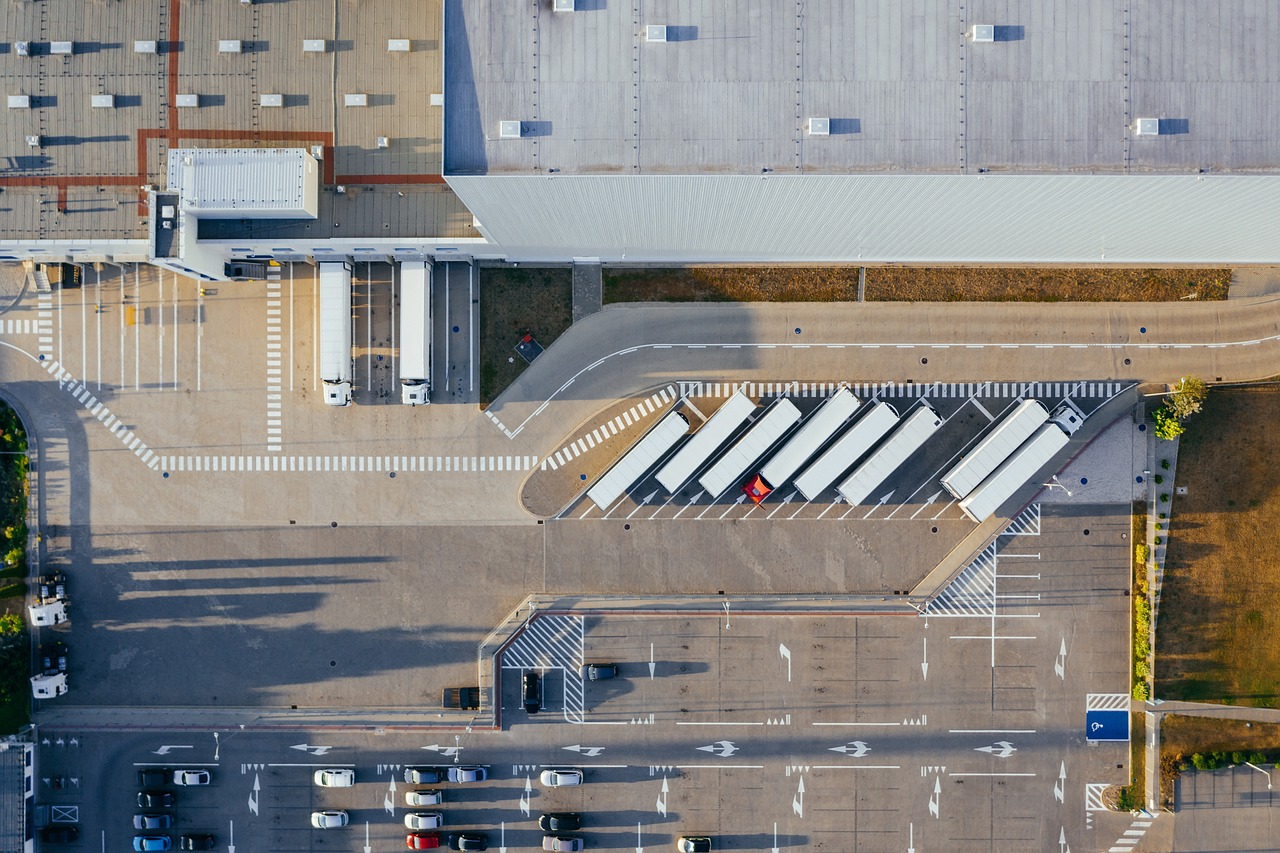Introduction
In today’s rapidly evolving food industry, technology is not just an auxiliary player; it’s the driving force behind innovation, efficiency, and sustainability. From farm to fork, technology is revolutionizing how we produce, process, distribute, and consume food. In this exploration, we’ll journey through the technological landscape that is reshaping the way we put food on our tables.
The modern food industry finds itself in the midst of a profound technological revolution, where innovation, efficiency, and sustainability are not just objectives but imperatives. Technology has emerged as the primary driver, reshaping every facet of the industry, from the very origins of food production to its journey to our tables. This transformative journey through the technological landscape reveals how we are reimagining, reinventing, and revolutionizing our relationship with food.
At the heart of this transformation is the farm, where technology is ushering in a new era of precision agriculture. Smart sensors, drones, and satellite imagery are now indispensable tools for farmers, providing real-time data on soil conditions, crop health, and weather patterns. This granular information enables farmers to optimize irrigation, fertilizer use, and pest management, reducing waste and environmental impact while boosting yields to meet the ever-growing global demand for food.
The revolution doesn’t stop at the farm gate; it extends to the processing and manufacturing stages. Automation and robotics have become integral to food processing, improving efficiency, consistency, and safety. Advanced machinery can perform intricate tasks, from sorting and packaging to quality control, with unmatched precision. Meanwhile, breakthroughs in food science have given rise to innovative processing techniques that preserve nutrients, enhance flavor, and extend shelf life without compromising on the quality and safety of the end product.
Distribution and logistics, too, have witnessed a technological makeover. Supply chains are becoming increasingly transparent and traceable through the integration of blockchain technology. Consumers can now trace the journey of their food products from their source to the store shelf, promoting transparency and accountability. Moreover, smart logistics systems employ real-time tracking and predictive analytics to optimize routes, reduce food spoilage, and minimize energy consumption in transportation.
The consumer experience has undergone a digital transformation as well. Mobile apps and online platforms offer convenience in ordering, meal planning, and even personalized nutrition recommendations. The Internet of Things (IoT) has introduced smart appliances and kitchen gadgets that streamline cooking and reduce food waste. Augmented reality and virtual reality applications are enhancing culinary experiences, allowing consumers to explore new cuisines and cooking techniques from the comfort of their homes.
Sustainability remains a core focus throughout this technological revolution. Innovations such as vertical farming, hydroponics, and lab-grown meat are redefining what it means to produce food sustainably. These methods reduce land and water use, minimize environmental impact, and offer a path towards a more resource-efficient food system.
In conclusion, technology has emerged as the driving force behind a profound transformation in the food industry. From precision agriculture and advanced processing techniques to transparent supply chains and digital consumer experiences, technology is reshaping how we produce, process, distribute, and enjoy food. This ongoing journey through the technological landscape promises not only increased efficiency but also greater sustainability, ushering in a future where we can put food on our tables with confidence in its quality, safety, and environmental responsibility.
For additional details, consider exploring the related content available here Historical Reflection of Food Processing and the Role of Legumes …
The heart of our food supply chain lies in the fields, and technology has transformed farming into a precise and data-driven endeavor. Precision agriculture employs tools like GPS, sensors, and drones to monitor crops, optimize irrigation, and apply fertilizers with pinpoint accuracy. This not only maximizes crop yields but also reduces resource wastage.
At the core of our global food supply chain, the heart of agriculture beats in the fields, and technology has revolutionized the way we cultivate the land. Precision agriculture, often referred to as smart farming or agtech, has ushered in a new era where farming is not only a labor of love but a precise, data-driven endeavor. This transformative approach leverages cutting-edge tools such as GPS technology, sensors, and drones to monitor crops, optimize irrigation, and apply fertilizers with pinpoint accuracy. The result is a remarkable synergy between nature and innovation that not only maximizes crop yields but also dramatically reduces resource wastage.
Precision agriculture relies on a rich tapestry of data collected from the farm itself, creating a dynamic and responsive feedback loop. GPS technology allows farmers to map out their fields with incredible precision, down to the centimeter. This digital cartography enables farmers to understand the unique characteristics of their land, such as variations in soil type, moisture levels, and topography. Armed with this knowledge, they can tailor their agricultural practices to the specific needs of each section of their fields.
Sensors play a pivotal role in this digital transformation. Soil sensors measure key parameters like moisture content and nutrient levels, providing real-time data that guides decisions about irrigation and fertilization. These sensors help prevent overwatering or over-fertilization, which not only conserves resources but also safeguards the environment by minimizing runoff and soil degradation.
Drones have taken precision agriculture to new heights—literally. These aerial vehicles equipped with cameras and multispectral sensors fly over fields, capturing detailed images and data. Drones can identify crop stress, disease outbreaks, and nutrient deficiencies early on, allowing farmers to take targeted action before issues escalate. This proactive approach not only saves crops but also minimizes the need for extensive pesticide and herbicide use.
One of the significant advantages of precision agriculture is its ability to enhance sustainability. By optimizing resource use, it reduces the environmental impact of farming. Precise irrigation minimizes water wastage, a critical concern in regions with water scarcity. Moreover, by reducing the need for excessive fertilizers and pesticides, precision agriculture helps protect ecosystems and reduces the potential for chemical runoff into water bodies.
Beyond sustainability, precision agriculture contributes to economic viability. Maximizing crop yields while minimizing input costs increases the profitability of farming operations. This, in turn, helps secure the livelihoods of farmers and ensures a stable food supply for communities around the world.
Furthermore, the digitalization of agriculture opens doors to data-driven decision-making and predictive analytics. Farmers can harness historical data to anticipate trends, plan crop rotations, and optimize planting schedules. This proactive approach not only ensures the reliability of the food supply chain but also helps mitigate the effects of climate change, as farmers can adapt their practices based on evolving weather patterns.
In summary, precision agriculture represents a remarkable convergence of technology and tradition. It honors the time-honored art of farming while embracing the power of innovation to feed a growing global population more efficiently and sustainably. As we look to the future, the continued evolution of precision agriculture promises to play an indispensable role in addressing the challenges of food security, environmental stewardship, and economic prosperity in our interconnected world.
Don’t stop here; you can continue your exploration by following this link for more details: Innovation with a Purpose: The role of technology innovation in …

The Internet of Things (IoT) has made its mark on agriculture with the advent of smart farming. Sensors and connected devices collect real-time data on soil conditions, weather patterns, and plant health. Farmers can make informed decisions, remotely monitor their operations, and even automate tasks using smart equipment.
The emergence of the Internet of Things (IoT) has ushered in a new era of innovation in the realm of agriculture, giving rise to what is now known as smart farming. This transformative technology landscape is fundamentally changing the way we approach agriculture, offering a multitude of benefits that extend far beyond traditional farming practices.
At the heart of smart farming lie sensors and connected devices that have been strategically deployed across agricultural landscapes. These devices serve as the watchful eyes and vigilant ears of the farm, continuously collecting a treasure trove of real-time data. They monitor a diverse array of crucial factors, from the moisture levels in the soil to the atmospheric conditions overhead, and even the health of the plants themselves. This wealth of data is a valuable resource, providing farmers with unparalleled insights into the dynamic ecosystem of their fields.
One of the most profound advantages of smart farming is the ability to make data-driven decisions. Armed with the insights gleaned from IoT sensors, farmers can optimize their operations with precision and efficiency. They can adjust irrigation schedules based on soil moisture levels, implement targeted pest control measures, and even fine-tune their planting and harvesting timelines to maximize yield. These data-driven decisions translate into reduced resource waste, increased productivity, and ultimately, greater profitability for farmers.
Remote monitoring is another hallmark of smart farming. Farmers are no longer tethered to their fields, as they can access real-time data and insights from virtually anywhere with an internet connection. This level of remote visibility not only saves time and effort but also offers a layer of convenience and peace of mind that was previously unimaginable. It empowers farmers to respond promptly to changing conditions, mitigating potential risks and optimizing resource allocation.
Moreover, smart farming opens the door to automation. The IoT ecosystem includes smart equipment and machinery that can be programmed to carry out tasks with a high degree of precision. Tractors, drones, and robotic harvesters can operate autonomously, performing tasks such as planting, monitoring, and harvesting. This automation not only reduces labor costs but also minimizes the risk of human error, leading to more consistent and reliable outcomes.
In conclusion, the Internet of Things has cast its transformative spell on agriculture, giving rise to smart farming. Through sensors, data analytics, remote monitoring, and automation, farmers are empowered with the tools to revolutionize their operations. Smart farming represents a powerful fusion of technology and agriculture, offering a sustainable path to increased efficiency, productivity, and profitability. As this technological frontier continues to evolve, it holds the promise of ushering in a new era of agriculture that is not only smarter but also more sustainable and responsive to the challenges of our time.
To delve further into this matter, we encourage you to check out the additional resources provided here: Survey on Security Threats in Agricultural IoT and Smart Farming …

To address the challenge of feeding a growing global population while minimizing land use, technology has given rise to vertical farming and controlled environment agriculture. These methods utilize vertical stacking and controlled climates to produce crops efficiently and sustainably, often in urban settings.
The challenge of feeding our ever-expanding global population in a sustainable and land-efficient manner has catalyzed a remarkable revolution in agriculture, giving birth to innovative approaches like vertical farming and controlled environment agriculture (CEA). These cutting-edge methods represent a fusion of technology and agriculture, offering a promising solution to the pressing issue of food production while minimizing the environmental footprint.
Vertical farming, as its name suggests, defies the traditional horizontal expanse of agricultural fields. Instead, it reimagines the very dimensionality of farming, utilizing vertical stacking to maximize space utilization. Vertical farming facilities are designed as multi-tiered structures where crops are cultivated in layers, often in the form of shelves or racks. Each layer is equipped with specialized lighting, precise climate control, and irrigation systems, creating optimal conditions for plant growth.
Controlled environment agriculture (CEA) takes this concept a step further by providing an unparalleled degree of control over the growing environment. In CEA systems, not only is space maximized through vertical stacking, but the entire cultivation environment, including temperature, humidity, light intensity, and even carbon dioxide levels, is meticulously regulated. This precision allows for year-round cultivation of crops, independent of external weather conditions.
One of the most significant advantages of these innovative methods is their remarkable efficiency in resource utilization. Vertical farming and CEA drastically reduce land requirements, making them particularly appealing in densely populated urban areas where available arable land is scarce. They also minimize water usage by recycling and reusing irrigation water and significantly reduce the need for synthetic pesticides and herbicides, contributing to more sustainable farming practices.
Moreover, the controlled environments of these systems result in enhanced crop yields and quality. By fine-tuning the conditions in which plants grow, it’s possible to optimize growth rates, nutritional content, and flavor profiles. This level of precision not only benefits consumers with fresher and more nutritious produce but also increases the economic viability of these methods.
The urban setting is an ideal backdrop for vertical farming and CEA. These approaches bring agriculture closer to consumers, shortening the supply chain and reducing the environmental impact of food transportation. They also offer opportunities for local food production, contributing to food security and resilience in urban areas.
While vertical farming and CEA represent promising solutions to the challenges of food production and land use, they are not without their own complexities. Initial setup costs, energy consumption, and the need for specialized knowledge and technology can present barriers. However, ongoing advancements and increased adoption are gradually making these methods more accessible and cost-effective.
As our global population continues to grow, the marriage of technology and agriculture in the form of vertical farming and controlled environment agriculture holds great promise. These innovative approaches not only address the pressing issue of food security but also provide a blueprint for more sustainable and resource-efficient farming practices, offering a glimpse into the future of agriculture.
For additional details, consider exploring the related content available here The future of food and agriculture: Trends and challenges

Consumers are increasingly concerned about the source and safety of their food. Blockchain technology is revolutionizing supply chain transparency by providing an immutable ledger that traces the journey of food products from farm to store. This transparency boosts consumer trust and allows for rapid recalls in case of contamination.
Blockchain: Transforming Food Traceability for the Informed Consumer
In an era where consumers demand not just nourishment but also knowledge about the origin and safety of their food, blockchain technology has emerged as a transformative force. It is reshaping the way we perceive and interact with our food supply chain, instilling transparency and trust like never before.
1. Immutable Food Journeys
Blockchain technology creates an unalterable ledger that documents every step of a food product’s journey. From the moment a seed is planted in the soil to the final purchase by a consumer, each stage is recorded with meticulous precision. This transparency empowers consumers with the ability to trace the entire lifecycle of their food.
2. Unmasking the Origins
One of the most compelling aspects of blockchain in food traceability is the ability to unmask the origins of products. Consumers can easily access information about where their food was grown, how it was transported, and even the conditions in which it was produced. This newfound transparency fosters a deeper connection between consumers and the source of their sustenance.
3. Real-Time Monitoring and Alerts
Blockchain doesn’t just provide a historical record; it offers real-time monitoring capabilities. Sensors and data points throughout the supply chain constantly update the blockchain, allowing for instant access to the latest information. In the event of a contamination scare or food recall, this real-time capability becomes invaluable, enabling swift actions to protect public health.
4. Trust in the Label
Labels on food products often carry certifications and claims about ethical sourcing, organic production, or fair trade practices. Blockchain verifies these claims, ensuring that labels are more than just marketing slogans. Consumers can trust that the claims on a product’s label are backed by an immutable digital trail.
5. Empowering Ethical Choices
As consumers become more conscientious about their food choices, blockchain empowers them to align their purchases with their values. Whether it’s supporting local farmers, favoring sustainable practices, or avoiding products associated with deforestation or unethical labor, blockchain allows consumers to make informed decisions that reflect their ethical priorities.
Conclusion: A Transparent Food Revolution
Blockchain technology isn’t merely transforming food traceability; it’s ushering in a food revolution built on transparency, trust, and informed choices. As consumers gain unprecedented insights into the journey of their food, they become more than mere consumers; they become active participants in shaping a food system that aligns with their values and priorities. It’s a future where every meal is not just a source of sustenance but a testament to transparency and trust in the food we eat.
For additional details, consider exploring the related content available here Innovation with a Purpose: The role of technology innovation in …

In food production and distribution facilities, robots are taking on tasks once performed by humans. They pick and pack produce, sort products, and even cook in commercial kitchens. Automation not only increases efficiency but also reduces the risk of contamination.
In the realm of food production and distribution, a technological revolution is underway, with robots increasingly taking on tasks that were traditionally performed by humans. These versatile machines are found at various stages of the supply chain, from the farm to the table, and their capabilities are expanding rapidly. They pick and pack fresh produce with precision, sort products with unmatched speed and accuracy, and even wield spatulas in commercial kitchens to prepare meals. The integration of automation in these processes is not only a testament to human ingenuity but also brings about a host of benefits, including heightened efficiency and, critically, a significant reduction in the risk of contamination.
In the agricultural sector, robotic systems are transforming the way crops are harvested and handled. For example, robotic arms equipped with advanced computer vision technology can gently pick ripe fruits or vegetables from plants without causing damage. This is a particularly valuable innovation for delicate produce, as it minimizes bruising and ensures that only high-quality items make their way to consumers. By eliminating the need for manual labor, which can be time-consuming and physically demanding, these robots increase efficiency and reduce the risk of contamination through human contact.
Within food processing and packaging facilities, robots play a pivotal role in ensuring product safety and quality. Automated systems can precisely sort and inspect items, identifying and removing any defective or contaminated products from the production line. This level of precision is difficult to achieve consistently with human labor alone. Furthermore, robotic arms can handle products with a level of hygiene and cleanliness that is challenging to maintain in a human workforce.
Commercial kitchens are also witnessing the integration of automation and robotics. From pizza-making robots that expertly spread sauce and toppings to automated stir-fry woks that cook with consistent precision, these kitchen assistants enhance both food safety and consistency in preparation. By reducing the need for human intervention, these systems mitigate the risk of contamination from unwashed hands or improper food handling techniques.
The advantages of automation in the food industry extend beyond efficiency and safety. Robots can work tirelessly, 24/7, without the need for breaks, which can significantly boost production capacity and meet the demands of an ever-growing global population. Additionally, automation can alleviate labor shortages, which have become a concern in some regions, by filling in roles where there is a shortage of skilled workers.
While automation is transformative, it is not without challenges. Integrating these technologies requires substantial investment in equipment and training, and concerns about job displacement in some industries have been raised. However, when implemented thoughtfully, automation can complement human labor, freeing workers from repetitive tasks and allowing them to focus on higher-value activities, such as quality control, maintenance, and innovation.
In conclusion, the integration of robots and automation in food production and distribution facilities is revolutionizing the industry. These machines not only enhance efficiency and productivity but also significantly reduce the risk of contamination, contributing to food safety and quality assurance. As technology continues to advance, the synergy between human expertise and robotic precision promises to usher in a new era of safe, reliable, and efficient food production and distribution.
Additionally, you can find further information on this topic by visiting this page: Challenges and Opportunities in Robotic Food Handling: A Review …

Technology has improved food processing and preservation methods. High-pressure processing, ultraviolet (UV) treatment, and novel packaging materials extend the shelf life of products while maintaining their nutritional value and taste.
In the relentless march of technological advancement, our approach to food processing and preservation has undergone a profound transformation. Innovations such as high-pressure processing, ultraviolet (UV) treatment, and the development of novel packaging materials have emerged as the vanguards of extending the shelf life of food products while preserving their vital nutritional content and delectable flavors.
High-pressure processing is a game-changing technique that subjects food products to intense pressures, effectively neutralizing harmful microorganisms without the need for high temperatures or chemical additives. This method not only ensures the safety of perishable items but also safeguards their nutritional integrity and natural taste. From fruit juices to ready-to-eat meals, high-pressure processing has become a cornerstone of modern food preservation, allowing consumers to enjoy fresh and flavorful products for longer durations.
Ultraviolet (UV) treatment, another technological marvel, employs the power of UV rays to sanitize and extend the shelf life of food items. This non-thermal process effectively eliminates pathogens and bacteria, making it an environmentally friendly alternative to traditional chemical preservatives. Beyond its sterilization capabilities, UV treatment has the added advantage of preserving the vitamins and antioxidants present in food, ensuring that consumers receive the full spectrum of nutritional benefits.
Novel packaging materials have also revolutionized food preservation. Advanced materials such as modified atmosphere packaging (MAP) and vacuum-sealed containers create protective microenvironments around products, shielding them from oxygen and moisture, the primary culprits of food degradation. This preservation approach not only enhances shelf life but also prevents the loss of essential nutrients, colors, and flavors, maintaining the quality of food from production to consumption.
These technological innovations represent a harmonious marriage of science and culinary artistry. They empower food producers to craft products that not only delight the palate but also meet the demands of modern lifestyles. Consumers can now savor the convenience of extended shelf life without compromising on the nutritional richness and flavor profiles of the foods they cherish.
In essence, technology has bestowed upon us a treasure trove of tools to preserve the essence of our culinary creations. High-pressure processing, UV treatment, and innovative packaging materials are the sentinels of food preservation, ensuring that the meals we relish remain not only safe but also nutritious and delectable, even in a world where time and distance often separate us from the source of our sustenance.
You can also read more about this here: Historical Reflection of Food Processing and the Role of Legumes …
The rise of e-commerce and food delivery apps has transformed how consumers access food. Online marketplaces connect producers directly to consumers, while delivery apps offer convenience and choice for meal delivery.
The rise of e-commerce and food delivery apps has transformed how consumers access food. Online marketplaces connect producers directly to consumers, while delivery apps offer convenience and choice for meal delivery.
Online marketplaces have democratized access to a wide range of food products. They enable small-scale producers, including local farmers and artisans, to reach a global audience without the need for a physical storefront. This direct connection between producers and consumers benefits both parties. Producers can expand their market reach and receive fair compensation for their products, while consumers gain access to unique, high-quality, and often locally sourced food items that may not be readily available in traditional brick-and-mortar stores.
Moreover, online marketplaces promote transparency in the food supply chain. Consumers can trace the origin of their food products, learn about the production methods, and even interact with producers through digital platforms. This transparency fosters trust and empowers consumers to make informed choices based on their preferences for ethical sourcing, sustainability, and health-conscious options.
Food delivery apps have also revolutionized the restaurant industry. They provide consumers with a convenient and efficient way to enjoy restaurant-quality meals in the comfort of their homes. These apps offer an extensive array of dining options, from local eateries to international cuisine, all accessible with a few taps on a smartphone.
The convenience of food delivery apps extends beyond meal selection. They offer features such as real-time order tracking, contactless payments, and customer reviews, enhancing the overall dining experience. This level of convenience has reshaped consumer behavior, with many people now opting for home delivery or takeout as their primary dining choice.
Additionally, food delivery apps have had a profound impact on the restaurant industry itself. They have allowed restaurants to expand their reach beyond their physical locations, tap into a broader customer base, and optimize their operations for both in-house dining and delivery. This shift in business models has been particularly valuable during periods of lockdowns and restrictions, enabling restaurants to continue serving customers and sustaining their business.
However, the growth of e-commerce and food delivery apps also raises important considerations, such as food safety, environmental impact, and labor practices. Ensuring that food products are handled and delivered safely, minimizing the carbon footprint of food delivery, and addressing labor rights in the gig economy are challenges that require ongoing attention and innovation.
In conclusion, the rise of e-commerce and food delivery apps has ushered in a new era of accessibility, convenience, and choice for consumers in the food industry. These digital platforms connect producers directly to consumers, empower consumers to make informed choices, and transform the restaurant and food delivery landscape. As technology continues to advance, the food industry will likely see even more innovative solutions that cater to evolving consumer preferences and lifestyles.
To expand your knowledge on this subject, make sure to read on at this location: The future of food and agriculture: Trends and challenges

In response to environmental concerns, technology is driving the development of sustainable packaging materials. Biodegradable, compostable, and recyclable options are reducing the environmental footprint of food packaging.
The quest for sustainable packaging solutions in the food industry has become a paramount concern, driven by pressing environmental issues. Fortunately, technology is playing a pivotal role in accelerating the development of packaging materials that align with these sustainability goals. From biodegradable and compostable materials to recyclable options, technology is enabling a significant reduction in the environmental footprint associated with food packaging.
Biodegradable packaging materials, a shining example of technological innovation, are designed to break down naturally into harmless components when exposed to environmental conditions. These materials often derive from renewable sources such as cornstarch, sugarcane, or cellulose, and they offer a promising alternative to traditional plastic packaging. They can be used for a variety of purposes, from wrapping fresh produce to encapsulating single-serve snacks. The biodegradability of these materials not only minimizes landfill waste but also reduces the release of harmful microplastics into the environment.
Compostable packaging takes sustainability a step further by not only breaking down but also enriching the soil. These materials, often made from organic matter like plant fibers or biopolymers, can be safely composted in industrial or home composting systems. This circular approach to packaging not only reduces waste but also closes the loop on resource utilization. Compostable packaging is particularly suited for products like organic fruits and vegetables, promoting an environmentally friendly end-of-life solution.
Recyclable packaging, although not a new concept, is benefitting from technological advancements that make it more efficient and economically viable. Innovations in sorting and recycling technologies enable the recovery of valuable materials like plastics, metals, and paper from packaging waste. Additionally, the use of recycled content in packaging materials is becoming increasingly prevalent, further reducing the demand for virgin resources. By investing in efficient recycling infrastructure and embracing recyclable packaging options, the food industry is reducing its reliance on raw materials and minimizing its environmental impact.
Moreover, technology is fostering transparency in packaging materials. Smart labels and QR codes provide consumers with information about the environmental attributes of packaging, such as its recyclability or biodegradability. This empowers consumers to make informed choices and encourages companies to adopt more sustainable packaging practices.
In conclusion, technology is catalyzing a profound shift in the world of food packaging, responding to pressing environmental concerns. Biodegradable, compostable, and recyclable packaging options, enabled by technological innovation, are rapidly reducing the environmental footprint associated with food packaging. As these sustainable materials become increasingly mainstream, the food industry is taking significant steps toward a more environmentally responsible and sustainable future, where packaging serves to protect both the food and the planet.
You can also read more about this here: Nanotechnology: A Revolution in Modern Industry – PMC

Technology has woven itself into the very fabric of our food production and distribution systems. As we look ahead, innovation in areas like artificial intelligence, biotechnology, and renewable energy will further shape the future of food. It’s a culinary revolution that not only enhances efficiency and convenience but also promises a more sustainable and transparent food system for generations to come.
Technology has become an inseparable thread in the intricate tapestry of our food production and distribution systems. As we cast our gaze forward, it’s evident that innovation in transformative areas like artificial intelligence, biotechnology, and renewable energy will continue to weave the future of food into a remarkable and dynamic narrative. This culinary revolution not only amplifies efficiency and convenience but also holds the promise of creating a food system that is more sustainable, resilient, and transparent, securing the well-being of generations yet to come.
Artificial intelligence (AI) is one of the cornerstones of this technological transformation. It empowers farmers with data-driven insights that are invaluable for decision-making. AI algorithms analyze vast amounts of data collected from sensors, drones, and satellite imagery to provide real-time information about crop health, pest infestations, and weather patterns. This predictive capability enables farmers to respond swiftly to changing conditions, optimize resource use, and minimize crop loss. Additionally, AI is being utilized in food processing and distribution to enhance quality control, reduce waste, and improve supply chain logistics.
Biotechnology, with its innovations in crop breeding and genetic modification, is another powerful tool for reshaping the future of food. By developing crop varieties that are more resilient to pests, diseases, and adverse climate conditions, biotechnology can enhance food security and reduce the need for chemical inputs. Genetically modified crops can also be engineered to have enhanced nutritional profiles, potentially addressing global malnutrition challenges. Moreover, biotechnology has the potential to revolutionize alternative protein sources, such as lab-grown meat and plant-based proteins, offering sustainable alternatives to traditional livestock farming.
Renewable energy is a driving force in the quest for a more sustainable food system. Solar panels and wind turbines are being integrated into farms and food processing facilities, reducing their carbon footprint and energy costs. Sustainable energy sources not only make agriculture more environmentally friendly but also contribute to reducing greenhouse gas emissions associated with food production and distribution.
The concept of a circular food economy is emerging as a guiding principle for the future. It envisions a system where food waste is minimized through recycling, composting, and repurposing. Technologies like anaerobic digestion can convert food waste into energy, while innovative packaging materials and practices are reducing food packaging waste. Circular food systems aim to ensure that every resource invested in food production is maximized, minimizing waste and environmental impact.
Moreover, transparency and traceability are becoming paramount in the minds of consumers. Blockchain technology, which has already made strides in tracing food origins, is expected to play an even more significant role in providing consumers with a clear picture of where their food comes from. Consumers will have the ability to verify the authenticity of organic certifications, animal welfare practices, and fair trade claims, fostering trust and accountability throughout the food supply chain.
In conclusion, technology’s transformative influence on our food systems is an ongoing narrative that holds immense promise. The future of food will be shaped by innovation in artificial intelligence, biotechnology, renewable energy, and sustainable practices. This culinary revolution transcends mere convenience; it offers a vision of a food system that is not only more efficient but also more sustainable, resilient, and transparent. As we embrace these technological advancements, we are sowing the seeds of a brighter future, where food is not only nourishment for our bodies but also a source of well-being for our planet and generations to come.
For additional details, consider exploring the related content available here COVID-19 and hospitality 5.0: Redefining hospitality operations – PMC
More links
For additional details, consider exploring the related content available here Chapter 5 : Food Security — Special Report on Climate Change and …
